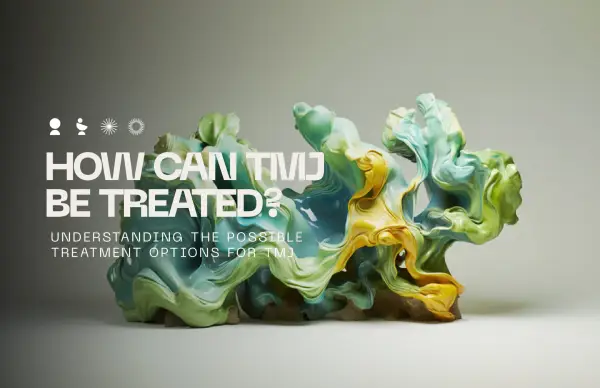Blog
TMJ – why you need botox!

Contents
What is TMJ?
How do you treat TMJ?
What is Botox?
How does Botox help with TMJ?
What’s more rewarding than a personalized Botox treatment?
Can TMJ and Botox fit in the same context? Anything is possible in the space of modern aesthetic medicine.
Conventional TMJ treatments may not work for everyone. Medics venture into research to find friendlier and more efficient natural alternatives. They aim to minimize side effects while enhancing a patient’s quality of life.
TMJ disorders affect everyone differently. Some people experience temporary symptoms, which may disappear after a week or two. For others, TMJ escalates into a chronic condition, affecting their quality of life.
Botox injections are among the most sought-after modern TMJ remedies. The Food and Drug Administration (FDA) approves them for medical purposes. They’re also an effective aesthetic treatment when administered correctly.
How do Botox injections work? When do results show, and for how long? Are there possible side effects? Does everyone qualify for treatment? How many sessions are enough for sustainable transformation?
Discover what TMJ means, its causes, its symptoms, and how to use Botox for jaw treatment.
What is TMJ?
TMJ, or the temporomandibular joint, is a sliding hinge linking the jawbone to the skull. Each side of the jaw has one joint just ahead of your ears. The joints aid in movements like speaking, yawning, and chewing.
A TMJ disorder is a condition that affects how these joints function. Its symptoms may include:
- Pain in your jaw joints, ligaments, and the muscles controlling jaw movement
- Facial pain
- Neck or shoulder pain
- Pain in and around your ears
- Tenderness in your jaw joints
- Jaw stiffness
- Difficulty chewing
- Jaw clicking, popping, or grating
- Locking in the jaw area
- Headaches
- Difficulty opening and closing your mouth
The cause of TMJ dysfunction may vary by individual. It could arise from factors like jaw injury, arthritis, or genetics. Some people get TMJ disorder due to teeth grinding, clenching, and normal wear and tear. Stress is also a common contributor, as it can tense your jaw muscles.
Scientists say TMJ is more prevalent in females than males. Research is underway to find the link between the disorder and female hormones.
In medical circles, the term TMJ can mean the jaw joint itself or the disorder. In this context, we refer to TMJ as the latter.
Did you know about 5–12% of adults have TMJ? Some estimates say this disorder affects more than 10 million Americans. It’s more likely to develop in people aged 20–40 years. Here are some habits that can worsen TMJ:
- Poor posture (adds excess pressure on your facial muscles, neck, and shoulder)
- Turning your teeth into tools for tasks like uncapping bottle tops
- Chewing gum or ice constantly
- Chewing on items like pens or pencils often
- Biting sizable chunks of food (overworks your jaw muscles)
- Lying on your stomach
How do you treat TMJ?
In most cases, TMJ-related discomfort is temporary and could occur in cycles. Self-managed care and conservative interventions may suffice to relieve most symptoms.
Popular remedies include physical therapy, medications, jaw surgery, and mouthguards. While convenient, these approaches don’t always favor every patient.
For some people, TMJ symptoms grow more painful and disabling. You may need to undergo thorough testing to find a more lasting solution.
To determine if a TMJ injection is ideal for you, your doctor may run a physical examination by:
- Checking your range of motion when opening and closing the mouth
- Pressing on your jaw and face to detect areas of discomfort
- Feeling around the jaw joints when opening and closing your mouth
At LIVV Natural, we administer these injections via a Botox treatment. This aesthetic procedure favors TMJ due to its efficacy and safety. It’s a non-invasive and non-synthetic remedy that targets the skin. It produces lasting effects to preserve your natural beauty.
Some patients may require additional screening to get an accurate assessment. Imaging tests give a closer view of your jaw joints and their surrounding structures. These tests might include:
- Dental X-rays
- TMJ arthroscopy
- CT scans
- MRI
Besides treatment, here are a few self-care tips to ease TMJ symptoms:
- Apply ice packs
- Eat soft foods
- Minimize extreme jaw movements (loud singing or wide yawning)
- Practice relaxation techniques for stress management
- Practice mild jaw stretching and muscle relaxation exercises
What is Botox?
Botox is a type of botulinum toxin injection. Botulinum toxins are neurotoxins that interact with nerves, weakening your muscles temporarily. Doctors administer these FDA-approved injectables for medical or cosmetic purposes.
They inject small Botox amounts into particular muscles to target wrinkles. The aim is to restore skin elasticity and maintain a youthful appearance. Common Botox areas targeted for anti-aging treatment include:
- Jawline
- Forehead
- Nose
- Eyes (crow’s feet)
- Neck
- Lips
- Chin
Botox originates from bacteria called Clostridium botulinum. This organism produces the neurotoxins needed to attack the nervous system. Botox uses tiny amounts of these neurotoxins to prevent disease. The most they can do is paralyze muscles temporarily.
How does Botox help with TMJ?
Botox aids TMJ by inhibiting the masseter muscle from clenching. This muscle controls mastication and supports chewing. Injecting Botox into the masseter muscle induces temporal muscle paralysis or relaxation.
The injection slows the release of neurotransmitters to jaw muscles that control clenching. In other words, it helps prevent involuntary muscle movements. This therapeutic process occurs for several months, allowing Botox to:
- Correct the sequence of muscle exercises
- Decrease square jaw or facial wrinkles
- Alleviate jaw pain
A research review shows that Botox may improve TMJ-related symptoms like:
- Jaw clicking
- Pain
- Slowed jaw movement
- Hyperactivity and hypermobility
Another study subjected 44 TMJ patients to Botox injections on the masseter muscles. The treatment enhanced the ability of patients to open their mouths wide. Patients registered a 59% pain reduction in the first month. TMJ pain had declined by up to 70% by the sixth month.
Almost anyone with TMJ symptoms may be an ideal candidate for Botox therapy. The beauty of this treatment is that it’s low-cost and quick to administer. The Botox toxins wear off within a few months, with little to no downsides.
At LIVV Natural, we typically administer an average of 50 units (25 units on each side) based on your situation. This prescription isn’t cast in stone. We customize Botox injections to your unique goals and needs. The effects of Botox therapy usually last three to five months.
An ideal treatment regimen should feature sessions every three to four months. You may spread out the therapy for one or two years. Ultimately, your jaw muscles may get conditioned to less contraction. From there, you can space out treatments for lengthier periods.
Our procedure is minimally invasive and only induces slight discomfort. It takes a few minutes to be on your way without needing anesthesia. Most Botox side effects are mild and get better in a day or two. Besides bruising and swelling at the injection site, you may notice:
- Pain in the treatment area
- Headache
- Eye irritation
- Stomach upset
- Flu-like symptoms
Remember, even if you only have one-sided jaw pain, you should treat both sides of the face. This approach ensures your musculature maintains its optimal balance. You risk disrupting teeth and chewing alignment by applying Botox on one side.
After Botox therapy, wait at least 24 hours before doing other facial treatments. Feel free to resume your usual routine afterward.
Expect significant results within 1–4 days of receiving Botox for jaw pain. The effects peak after 1–4 weeks. Prolong and make the most of Botox injections through regular treatments.
What happens during Botox treatment?
First things first. Alert your naturopathic doctor of your current medications and supplements. It’s also crucial to disclose your dental and medical history. These details help your physician rule out other possible causes of pain.
Some medications may make you more prone to bruising after a Botox injection. Alcohol could also increase this risk while causing redness. Avoid drinking 24 hours before your procedure.
During your session, we use a super fine needle to inject small amounts of Botox into the target area. You may get several injections in different sections depending on the tissue.
We apply a topical numbing gel at your request to make you comfortable. Botox is an outpatient treatment, so you’ll go home the same day.
What about Botox aftercare? Focus on minimizing bruising, redness, or swelling with these tips:
- Don’t engage in strenuous physical activity for 24 hours
- Avoid putting pressure on or rubbing the treatment area for at least 12 hours
- Maintain an upright posture for about four hours (don’t lie down)
While Botox is relatively safe, avoid treatment if you’re pregnant or breastfeeding.
What’s more rewarding than a personalized Botox treatment?
Have you tried countless treatments without getting relief from jaw discomfort? There’s one more remedy to consider. It’s natural, minimally invasive, and effective. Several scientific studies prove that TMJ and Botox are a potential match.
While TMJ affects people differently, the results of Botox injections show some consistency. Botox carries significant potential to relieve most TMJ symptoms. It works by relaxing jaw muscles and reducing clenching and grinding.
The effects of Botox appear within a few days and peak after several weeks. They may wear off within three or more months. Regular treatments over a year or two can help you sustain a painless jawline for longer.
Don’t let jaw discomfort affect your quality of life. Botox therapy is a leading remedy at LIVV Natural. It takes a few minutes to administer without pain, all while being affordable. Book an appointment today to discuss your specific needs and goals.
Author: Dr. Jason Phan NMD – Founder of LIVV Natural – Anti-aging – regenerative medicine – peptide therapy


